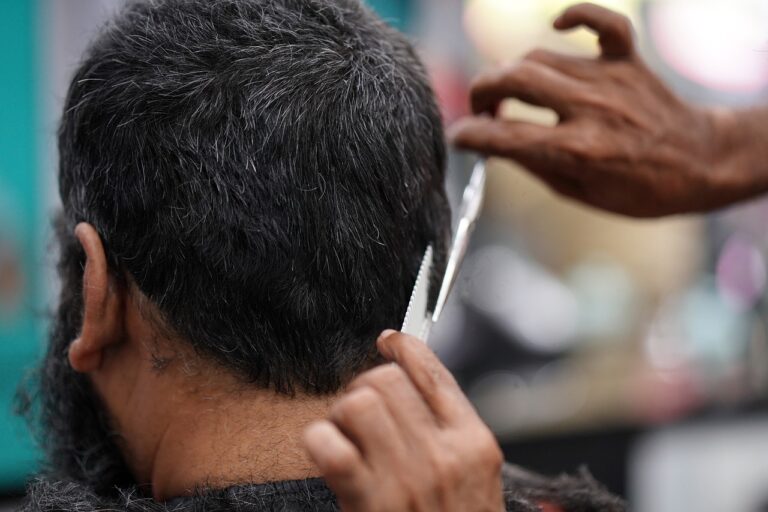Exploring the Impact of Social Media Influencers on Shopping Trends
Social media influencers have become a prominent force in shaping consumer behavior and influencing shopping trends in recent years. With millions of followers and a strong presence on platforms like Instagram, YouTube, and TikTok, these influencers have the power to sway their audiences’ purchasing decisions. In this article, we will delve into the impact of social media influencers on shopping trends and explore how their content can drive consumer behavior.
The Rise of Social Media Influencers
Social media influencers are individuals who have built a sizable following on social media platforms through their engaging content and authentic personalities. These influencers often focus on a specific niche, such as beauty, fashion, fitness, or lifestyle, and share their expertise with their followers. With the rise of influencer marketing, brands have recognized the value of partnering with these influencers to promote their products and services to a wider audience.
One of the key reasons behind the success of social media influencers is their ability to connect with their followers on a personal level. Unlike traditional celebrities, influencers often share intimate details of their lives and engage with their audience in a more relatable way. This authenticity helps to build trust and loyalty among their followers, making them more likely to take their recommendations and purchase products they endorse.
The Power of Influencer Marketing
One of the main ways social media influencers impact shopping trends is through influencer marketing campaigns. Brands collaborate with influencers to create sponsored content that promotes their products or services to the influencer’s followers. These partnerships can range from sponsored posts, product reviews, unboxing videos, to affiliate marketing programs.
Research has shown that influencer marketing can be highly effective in driving consumer behavior. According to a study by TapInfluence and Nielsen Catalina Solutions, influencer marketing delivers 11 times higher ROI than traditional forms of digital marketing. This is because consumers trust the opinions of influencers they follow and are more likely to make a purchase based on their recommendations.
The Impact of Influencer Collaborations
Another way social media influencers influence shopping trends is through collaborations with brands to launch their own products or collections. These collaborations often leverage the influencer’s personal brand and aesthetic to create unique and limited-edition products that resonate with their followers. From fashion collections to makeup collaborations, these partnerships can generate buzz and drive sales for both the influencer and the brand.
For example, beauty influencer Jeffree Star has collaborated with brands like Morphe and Shane Dawson to launch highly successful makeup collections. These collaborations have sold out within hours of their release, demonstrating the power of influencer collaborations in driving consumer demand and influencing shopping trends.
The Role of Affiliate Marketing
Affiliate marketing is another key strategy used by social media influencers to monetize their content and drive sales for brands. In an affiliate marketing program, influencers receive a commission for every sale generated through their unique affiliate link or discount code. This incentivizes influencers to promote products to their followers and encourages their audience to make a purchase.
Many influencers disclose their affiliate partnerships with brands to maintain transparency with their followers. By offering exclusive discounts or promotional codes, influencers can create a sense of urgency and drive impulse purchases among their audience. This strategy has been shown to be effective in increasing sales and driving traffic to brands’ websites.
Measuring the Impact of Influencer Marketing
It is essential for brands to measure the impact of their influencer marketing campaigns to evaluate their effectiveness and return on investment. There are several key performance indicators (KPIs) that brands can use to assess the success of their influencer partnerships, including reach, engagement, conversions, and sales metrics.
Reach refers to the number of people who have been exposed to the influencer’s content and have seen the brand’s products or services. Engagement measures how well the audience has interacted with the content, such as likes, comments, and shares. Conversions track the number of viewers who have taken a specific action, such as clicking on a link or making a purchase. Sales metrics assess the revenue generated from the influencer marketing campaign.
FAQs
1. How do social media influencers impact shopping trends?
Social media influencers impact shopping trends by promoting products and services to their followers through sponsored content, influencer collaborations, and affiliate marketing programs. Their authentic and relatable content helps to drive consumer behavior and influence purchasing decisions.
2. What are some examples of successful influencer marketing campaigns?
Some examples of successful influencer marketing campaigns include Kylie Jenner’s collaboration with Adidas, Chiara Ferragni’s partnership with Lanc�� and Emma Chamberlain’s collaboration with Bad Habit Beauty. These influencers have leveraged their personal brand and aesthetic to create engaging content that resonates with their followers and drives sales for the brands they partner with.
3. How can brands measure the impact of influencer marketing?
Brands can measure the impact of their influencer marketing campaigns by tracking key performance indicators (KPIs) such as reach, engagement, conversions, and sales metrics. By analyzing these data points, brands can evaluate the success of their influencer partnerships and optimize their marketing strategies for future campaigns.
Overall, social media influencers play a significant role in shaping shopping trends and influencing consumer behavior. By partnering with influencers and leveraging their reach and influence, brands can effectively promote their products and services to a wider audience and drive sales. As the power of influencer marketing continues to grow, it is essential for brands to understand the impact of influencers on shopping trends and adapt their marketing strategies accordingly.







